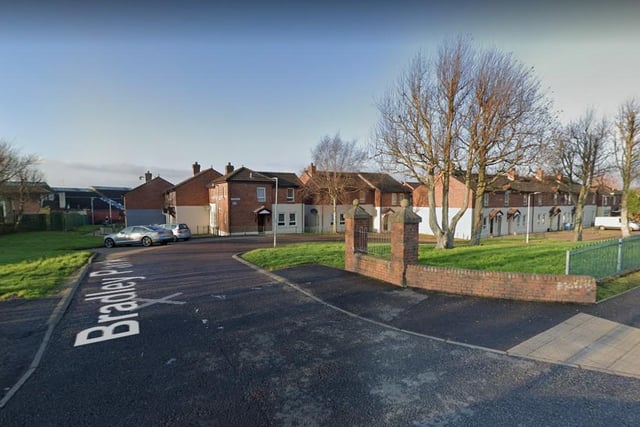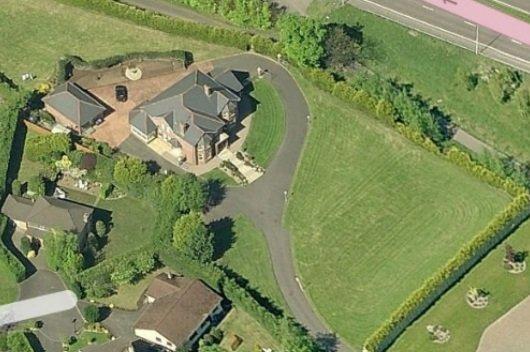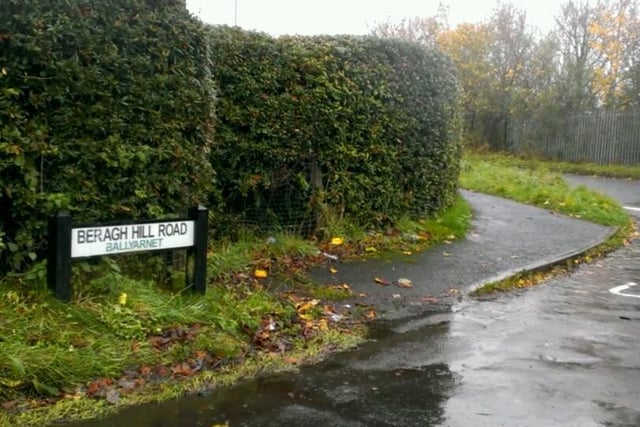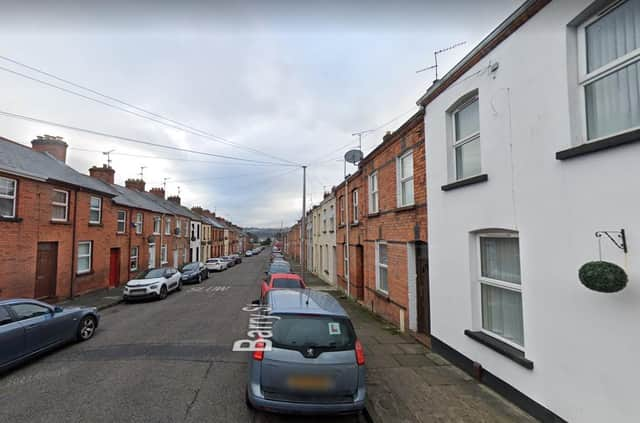Since 1987 the Queen's University at Belfast has been developing the ‘Northern Ireland Place-Name Project’ and compiling an incredible database of names that sometimes date back over a thousand years.
In compiling the Derry city section the compendium draws heavily on John Bryson's seminal 'Derry's Streets'. Other sources, including George Vaughan Sampson's map of Co. Derry of 1814, are also cited.
Some of the meanings suggested in the database are open to interpretation and debate but make for fascinating reading.
Based in Queen’s University, the project works in collaboration with Land and Property Services in the Department of Finance in providing a free online database of our local place-names (www.placenamesni.org. This is accompanied by an interactive searchable map of historical names (townlands, parishes, baronies and counties) which is provided by LPS.

1. Buncrana Road (Bóthar Bhun Cranncha). From the Inishowen seaside town Buncrana (Bun Cranncha), meaning 'foot of the Crana river'.
Buncrana Road (Bóthar Bhun Cranncha). From the Inishowen seaside town Buncrana (Bun Cranncha), meaning 'foot of the Crana river'.

2. Bradley Park (Páirc Uí Bhrolcháin). Named after Eamon 'Bronco' Bradley (1959-1982) (Bryson). Eamon Bradley was shot dead by the British army after leaving the Shantallow House where he had been playing pool on August 25, 1982.
Bradley Park (Páirc Uí Bhrolcháin). Named after Eamon 'Bronco' Bradley (1959-1982) (Bryson). Eamon Bradley was shot dead by the British army after leaving the Shantallow House where he had been playing pool on August 25, 1982.

3. Boomhall Park (Páirc Boomhall). In 1779, ninety years after Derry was saved from the starvation of the great siege of 1689, Colby's book records that Boomhall, a fine example of a classical villa, was built by John Alexander on the west bank of the River Foyle. It was named after the wooden boom that was erected across the River Foyle by the Jacobean forces. Its purpose was to prevent help from reaching the besieged city. http://www.derryghosts.com/boom.htm
Boomhall Park (Páirc Boomhall). In 1779, ninety years after Derry was saved from the starvation of the great siege of 1689, Colby's book records that Boomhall, a fine example of a classical villa, was built by John Alexander on the west bank of the River Foyle. It was named after the wooden boom that was erected across the River Foyle by the Jacobean forces. Its purpose was to prevent help from reaching the besieged city. http://www.derryghosts.com/boom.htm

4. Beragh Hill Road (Bóthar Chnoc Bearach). Beragh Hill may be derived from 'bearach' meaning 'a heifer'. However, it could also be from 'biorach' - 'place of points'.
Beragh Hill Road (Bóthar Chnoc Bearach). Beragh Hill may be derived from 'bearach' meaning 'a heifer'. However, it could also be from 'biorach' - 'place of points'.

